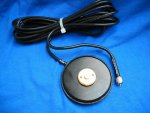I don't quite understand the NMO mount vs. ?
NMO means 'N'ew 'MO'torola, which by new they mean Motorola redesigned the way they were mounting antennas to vehicle sheet metal. Not exactly sure what the mount looked like originally nor when exactly the "new" one was introduced, probably in the 1970s or 1980s.
It requires in standard form that you drill a 3/4" hole in your sheet metal and mount it. That's the part on the left of this photo. The cable runs inside the vehicle completely. An NMO antenna has a base on it that matches the external part. There's ways to use it on a bracket and not drill a hole, but that wasn't the original intention.
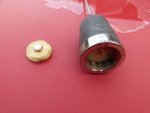
The primary alternative is to use a variation of the connector you see on most ham radios. This is usually referred to a UHF mount or PL259/SO239 mount. When they make an antenna that mounts this way it'll be more substantial than a coax connector but it's essentially the same dimensions otherwise.

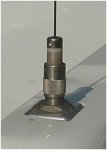
The third major way to mount an antenna is a 3/8" stud. If you've seen a CB antenna then you've seen it. It's just a 3/8" bolt in appearance.
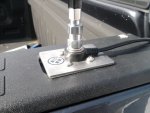
All these methods have their reasoning but which you use comes with a few things to know. The 3/8" stud is mechanically very robust, it's just a bolt after all. It can stand up to some significant abuse. Electrically it's horrible, corrosion is an issue, it has non trivial loss even when done well. It's used for CB and sometimes HF ham because the inefficiency is manageable at low frequencies and antennas at these frequencies tend to be physically large and need the support. You will never see it for GMRS and even at 2m ham it's not going to work well at all.
SO239 mounts are the least mechanically solid, it is after all originally designed to be a coax connector and not an antenna base. But for a small antenna it can work fine. It comes with some downside in signal loss but again, 2m and lower, it can be manageable. It's called a UHF connector but in modern day parlance UHF means something different than it did back in the 1940s when it was designed. Modern UHF frequencies are really the very limit of its usefulness.
The NMO mount is mechanically between the two, better than the UHF and reasonably close to a 3/8" for most antennas. It however excels electrically. It's basically invisible to RF until you get into cellular phone frequencies and even then NMO has been tweaked to work out there decently. We're talking 1.5 GHz. Mechanically, they use them on cop cars, firetrucks, business vehicles. They can break, they can pull out of sheet metal. But in normal use you really don't have to worry much.
The NMO system is very immune to weather for the most part. The major exception to that is when an NMO isn't mounted in sheet metal but rather on a bracket. Since the original design never intended such the underside is exposed (it can be sealed in that case with silicone). Also there exist variations of the traditional NMO that are designed to be used externally in the weather.
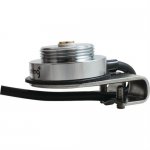
I'm guessing MaxxRad or Larsen magnetic 12" 1/4 wave will do the trick for me? Mini-mobile up front, run the cable back, and place the GMRS antennae on the top/back corner area?
A 1/4λ NMO antenna mounted magnetically on a flat surface will work fine. This is K7KEZ's 2m ham antenna but the basic idea would be the same (just about 1/3rd as tall). Just a whip on a magnetic base stuck on the roof.
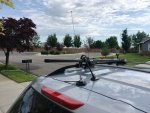
The mount looks like this.
